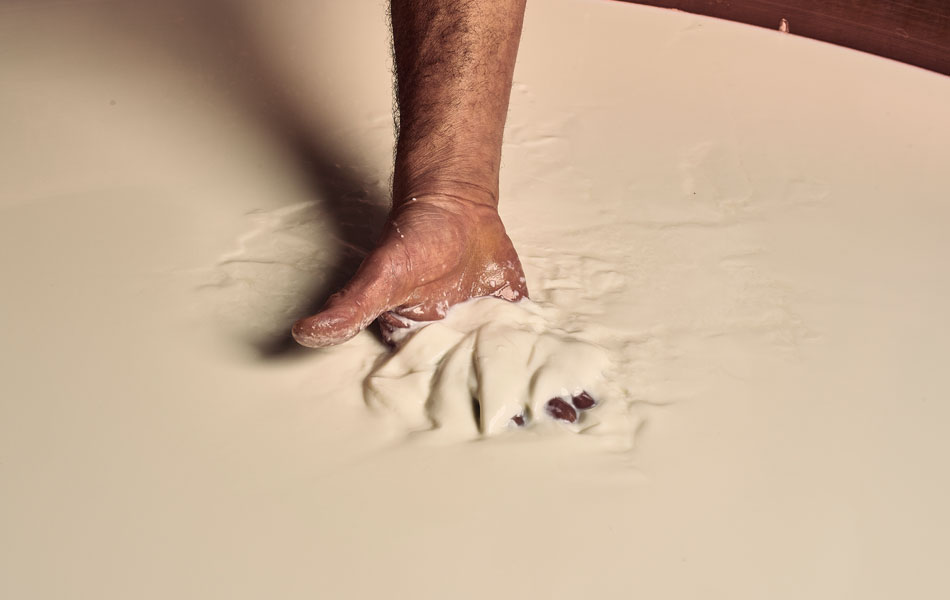
The aging process of Parmigiano Reggiano
Parmigiano Reggiano is one of the Italian cheeses with the longest tradition, a set of techniques and processes handed down from generation to generation and which, even today, give us a unique and inimitable cheese.
In our artisan dairy we produce between 18 and 20 wheels of cheese a day, a quantity that at first sight is limited, but which allows us to pay attention to everything down to the smallest detail, giving the right time to make every single cheese perfect. We only use milk from Friesian breed cows, from our associated stables which are located within 10 km of our Dairy. But once the milk arrives, what happens?

From the stable to the boiler
As established by the specification, we use milk from two different milkings; the evening milking and the morning milking, which comes to us in the dairy every day raw and strictly without additives. This is placed in special double-bottomed steel tanks cooled to 18 degrees in order to naturally draw out the fat, which we then use for the production of butter.
The Coagulation
The milk transferred to the boilers in the morning is then heated and we add two essential ingredients: the whey, or natural lactic bacteria developed from the whey of the previous processing, rich in lactic ferments; and rennet, a natural product obtained from the stomach of calves. Thanks to these two ingredients, the milk coagulates in 9/10 minutes at a temperature of 32/33°C.

The Breaking of the Curd
This phase, also called “Spinatura”, is used to break the Curd into many small fragments, carried out manually still today using an ancient tool called a Spino.
The Cooking
The curd fragments obtained are now heated to 54/55°C. We then leave everything to rest for about 45 minutes, so that the cheesy grains fall to the bottom of the boiler. During this resting period, the grains come together into a large compact mass at the bottom of this cone-shaped copper boiler, the shape of an inverted bell, and equipped with a double bottom, internally made of copper and externally of steel. Steam flows into the cavity between the two layers to heat and coagulate the milk during the cheese making.
The Putting into Moulds
The mass, generally weighing 100 kg, is extracted from the bottom thanks to a wooden shovel, placed in a linen cloth and left to drain. The mass is then divided in half and put into special moulds (or fascere) together with the canvas. After a few hours the wheels of cheese are turned and the canvas is removed, and in the evening between the mass and the fascera we insert a stamped band marking, which transfers the essential data onto the cheese: the wording “Parmigiano Reggiano”, the serial number of the dairy, the age and the month and an empty placeholder where, once the quality has been checked, the Consortium brand will be inserted. A couple of days after production, the wheel is salted in brine, or the cheese is immersed in a saturated solution of salt for 18/20 days.

The Aging
After the necessary time has elapsed, we remove the wheels of cheese from the brine and put them in the warehouse at controlled temperature and humidity, taking care to turn them and clean them whenever necessary. Here the cheeses remain for at least 12 months, a period in which they continue to lose moisture, the crust forms and the fermentation process continues.

The expert checking
Parmigiano Reggiano does not end its journey in the warehouse. In order to be called as such, it is necessary that the Consortium experts check each wheel of cheese, to verify that all quality standards are respected. Through the use of the famous hammer, these experts verify that everything is perfect within the cheese, and only after it has been branded by the Quality Control Body of the Consortium of Parmigiano Reggiano can it finally be called Parmigiano Reggiano DOP.

